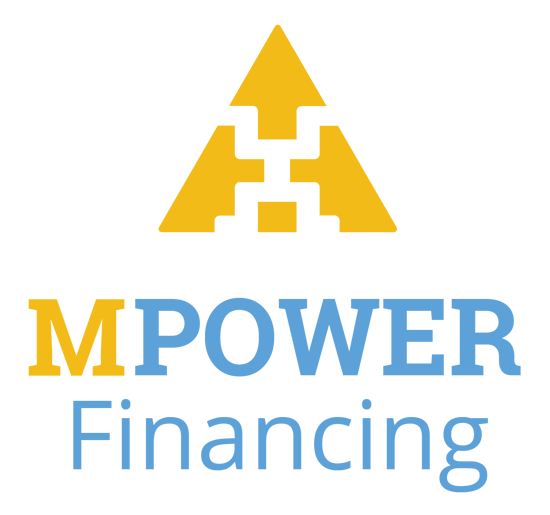Student Loan Rehabilitation: What It Is and When to Use It
You can rehabilitate defaulted federal student loans to get them back in good standing. And starting in 2027, you can rehabilitate up to two times, instead of one.

Many, or all, of the products featured on this page are from our advertising partners who compensate us when you take certain actions on our website or click to take an action on their website. However, this does not influence our evaluations. Our opinions are our own. Here is a list of our partners and here's how we make money.
Student loan rehabilitation is a process for borrowers to get their federal student loans out of default by making a series of nine manageable payments over a 10-month period. Defaulted private student loans are not eligible for rehabilitation.
Rehabilitation takes longer than student loan consolidation, which is the other primary option for default recovery. But rehabilitation is generally the better choice, because it:
- Removes the default from your credit report. This will improve your credit score, though the series of late payments that led to the default will remain on your credit report.
- Reduces collection costs. Rehabilitated federal direct loans are subject to collection costs, but those fees are not capitalized, or added to your loan balance.
Starting July 1, 2027, you can use rehabilitation to get out of student loan default up to two times. Previously, rehabilitation was a one-time opportunity. The change is a result of President Donald Trump’s recent budget reconciliation bill.
Advertisement



Student loans from our partners

on SoFi® website
SoFi® 

Fixed APR
4.24-9.99%
Min. credit score
650
on Earnest website
Earnest 
Fixed APR
4.79-9.99%
Min. credit score
665

on Credible’s website
ELFI 

Best for faster repayment options
Fixed APR
4.88-8.44%
Min. credit score
680
How to rehabilitate defaulted student loans
Generally, you’ll need to follow these steps to rehabilitate student loans:
Contact your federal student loan holder. This could be the Default Resolution Group or different company, depending on your loans and how long they’ve been in default. Log in to your studentaid.gov account if you’re unsure whom to contact.
Send a copy of your most recent tax return. You’ll have to mail or fax a copy of your most recent tax return or tax transcript to the Education Department. It will use this information to determine your monthly payments and send you a rehabilitation agreement within 10 days of receipt.
Agree to a payment amount. Rehabilitation payments must be “reasonable,” which usually means 10% or 15% of your discretionary income, depending on when you took out your loans.
But if you can’t afford that amount, you can request an alternative payment based on your overall finances. Alternative payments can be as small as $5 per month. (For loans taken out on or after July 1, 2027, the minimum monthly payment is $10.)
Sign and return your rehabilitation agreement. You must submit a written agreement to rehabilitate your defaulted loans. Don’t start making payments until you’ve officially started this process; they may not count toward rehabilitation.
Pay as required. Student loan rehabilitation requires you to make nine on-time payments — within 20 days of the due date — over a 10-month period. Payments must also be voluntary. For example, money seized from your tax refund wouldn’t count as a payment.
Student loan rehabilitation calculator
What happens after student loan rehabilitation
After student loan rehabilitation, your loan is usually assigned to a new federal student loan servicer. Your loans return to good standing. Collection activities stop, and you’ll regain access to federal student aid and repayment options, such as income-driven repayment and relief via deferments and forbearances.
You need a strategy to afford your payments post-rehab, to avoid re-defaulting on your debt. If you originally fell behind because payments were too expensive, selecting an income-driven repayment (IDR) plan will likely be your best choice. Your new servicer will give you this option when you restart repayment. Your payments could be as low as $0 on existing IDR plans.
Historically, rehabilitation has been a one-time opportunity — but starting July 1, 2027, borrowers will be allowed to rehabilitate up to two times. If you default for a third time, your primary remaining options will be consolidation or paying off your debt in full.
If you reach that point, your loan holder may also agree to a student loan settlement, where you pay less than you originally owed. Filing for student loan bankruptcy could be an option as well. But neither of those options is guaranteed to save you money or get rid of your loans.
Student loan rehabilitation vs. consolidation
You can consolidate out of default simply by agreeing to repay your new loan under an income-driven plan. This makes student loan consolidation a good option to resolve default quickly — for example, if you’re heading back to school and need access to federal student aid.
But unlike rehabilitation, consolidation will not remove the default from your credit report. Also, consolidating out of default can require additional collections costs.
Article sources
NerdWallet writers are subject matter authorities who use primary,
trustworthy sources to inform their work, including peer-reviewed
studies, government websites, academic research and interviews with
industry experts. All content is fact-checked for accuracy, timeliness
and relevance. You can learn more about NerdWallet's high
standards for journalism by reading our
editorial guidelines.
Related articles
AD
Refinance Your Student Loans with Earnest: smarter rates, total flexibility, no fees.
Check rate
on Earnest's website

AD

Refinance Your Student Loans with Earnest: smarter rates, total flexibility, no fees.
- Fixed APRs starting at 4.79%, Variable Rates starting at 5.88%;
- Customize your term down to the month (5–20 years);
- Skip one payment every 12 months.
Check rate
on Earnest's website
AD
Refinance Student Loans with SoFi:
low rates, flexible terms, no fees.
Check rate
on SoFi®'s website

AD

Refinance Student Loans with SoFi:
low rates, flexible terms, no fees.
- Rates: 4.74-9.99% (fixed) / 5.99-9.99% (variable) APR;
- Terms between 5–20 years, plus features like interest-only SmartStart for residents;
- Zero application/origination/prepayment fees — ever.

Check rate
on SoFi®'s website









